Learning to windsurf can be an exhilarating journey, and at LEARNS.EDU.VN, we understand your eagerness to hit the water. Mastering windsurfing involves a blend of balance, technique, and understanding the wind, but how long does it really take to become proficient? With dedication and the right approach, you can quickly gain the skills needed to enjoy this exciting water sport. Develop your windsurfing skills with our detailed guides and resources, improving your balance, coordination, and wind awareness.
1. Understanding the Timeline for Learning Windsurfing
The time it takes to learn windsurfing varies, influenced by individual aptitude, physical fitness, weather conditions, and frequency of practice. However, let’s break down a realistic timeline:
- Beginner Level (First Day): Most individuals can grasp the basics within a day or two of focused instruction.
- Intermediate Level (Several Weeks): Achieving a comfortable level of independent sailing typically requires a few weeks of consistent practice.
- Advanced Level (Several Months to Years): Mastering advanced techniques like planing, jibing, and wave riding can take several months to years.
2. Key Factors Influencing Learning Speed
Several factors can accelerate or decelerate your windsurfing learning curve:
- Physical Fitness: A good level of fitness enhances balance and stamina, essential for windsurfing.
- Prior Experience: Experience in related sports like sailing, surfing, or skateboarding can provide a head start.
- Quality of Instruction: Learning from certified instructors can significantly improve technique and safety.
- Frequency of Practice: Regular practice reinforces skills and builds muscle memory.
- অনুক conditions: Calm waters and moderate winds are ideal for beginners.
- Equipment: Using appropriate gear designed for beginners can aid in skill development.
3. The Essential Skills to Learn Windsurfing
To become a proficient windsurfer, mastering these fundamental skills is crucial:
- Rigging and De-Rigging: Understanding how to properly set up and dismantle your equipment.
- Balance: Maintaining stability on the board in various wind conditions.
- Uphauling: Raising the sail from the water.
- Neutral Position: Controlling the sail to stop or maintain position.
- Sailing Upwind: Navigating against the wind.
- Turning, Steering, and Tacking: Changing direction efficiently.
4. Detailed Breakdown: Time Investment for Each Skill
Let’s delve into the approximate time needed to learn each essential skill:
4.1. Rigging and De-Rigging a Windsurfer (90 Minutes)
Windsurfing equipment involves multiple components: sail, mast, boom, universal joint, board, and fins. Proper setup is vital for performance and safety.
- Rigging: Assembling all the parts, which can take about 60 minutes initially.
- De-Rigging: Disassembling the equipment, usually taking around 30 minutes after some practice.
Step-by-Step Guide to Rigging:
- Lay the sail flat on the ground.
- Insert the mast into the mast sleeve.
- Attach the boom to the mast at the appropriate height.
- Connect the uphaul rope.
- Attach the universal joint to the board.
- Connect the sail to the universal joint.
- Tension the downhaul and outhaul.
4.2. Finding Balance on a Windsurf Board (60 Minutes)
Balance is key to windsurfing. You need to get comfortable with the board’s instability on choppy waters.
- Initial Practice: Spending about 60 minutes practicing balance on the board.
- Common Challenges: Overcoming the tendency to lose balance and fall.
Tips for Improving Balance:
- Start on flat water.
- Keep your knees slightly bent.
- Focus on a distant point.
- Use small, subtle movements to adjust your balance.
4.3. Uphauling the Sail (45 Minutes)
Uphauling involves lifting the sail out of the water, a physically demanding task for beginners.
- Technique: Mastering the proper technique to avoid strain.
- Time Investment: Expect to spend at least 45 minutes practicing this skill.
Proper Uphauling Technique:
- Grab the uphaul rope.
- Keep your knees slightly bent and your back straight.
- Pull the rope slowly and steadily.
- Use your body weight to assist in lifting the sail.
4.4. Staying in the Neutral Position (60 Minutes)
The neutral position is a safe stance where the sail flaps without pulling.
- Definition: The board faces directly across the wind, and the sail is at a right angle.
- Practice Time: Dedicate an hour to mastering this position.
How to Achieve the Neutral Position:
- Stand in the center of the board.
- Hold the boom loosely.
- Allow the sail to flap freely.
- Adjust your stance to maintain balance.
4.5. Sailing Upwind (60 Minutes)
Sailing upwind involves letting the sail catch the wind and moving forward.
- Stance: Adopting a V stance to counterbalance the wind’s power.
- Learning Curve: Expect to fall frequently while learning this skill.
- Practice: Spend about an hour practicing sailing upwind.
Techniques for Sailing Upwind:
- Sheet in the sail to catch the wind.
- Lean back to counterbalance the pull of the sail.
- Keep your weight balanced.
- Adjust your angle to the wind to maintain forward motion.
4.6. Turning, Steering, and Tacking (120 Minutes)
Turning, steering, and tacking allow you to change direction efficiently.
- Importance: Essential for returning to shore and navigating courses.
- Time Required: Plan for about two hours of practice in calm conditions.
Key Techniques:
- Turning: Shifting your weight to initiate the turn.
- Steering: Using the sail to control your direction.
- Tacking: Changing direction while sailing into the wind.
5. Sample Training Schedule for Beginners
Here’s a sample training schedule to help you learn windsurfing:
| Day | Activity | Duration | Notes |
|---|---|---|---|
| Day 1 | Introduction to Equipment | 30 minutes | Learn about the parts of a windsurfer and their functions. |
| Rigging and De-Rigging | 90 minutes | Practice setting up and dismantling the equipment. | |
| Balance on the Board | 60 minutes | Practice standing and balancing on the board on flat water. | |
| Day 2 | Uphauling the Sail | 45 minutes | Practice raising the sail from the water. |
| Staying in the Neutral Position | 60 minutes | Practice controlling the sail in a neutral position. | |
| Day 3 | Sailing Upwind | 60 minutes | Practice sailing in a straight line and against the wind. |
| Turning and Steering | 60 minutes | Learn basic turning techniques. | |
| Day 4 | Tacking | 60 minutes | Practice changing direction while sailing into the wind. |
| Review and Practice All Skills | 60 minutes | Reinforce all previously learned skills. | |
| Day 5+ | Continued Practice and Refinement | 1-2 hours | Practice independently to improve technique and build confidence. |
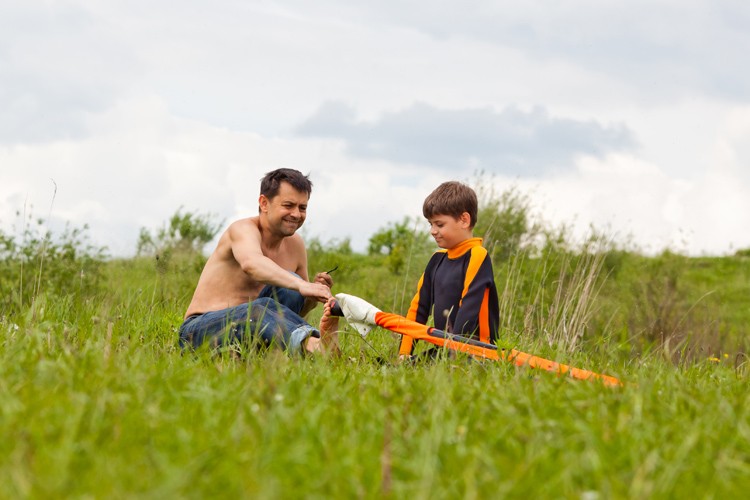
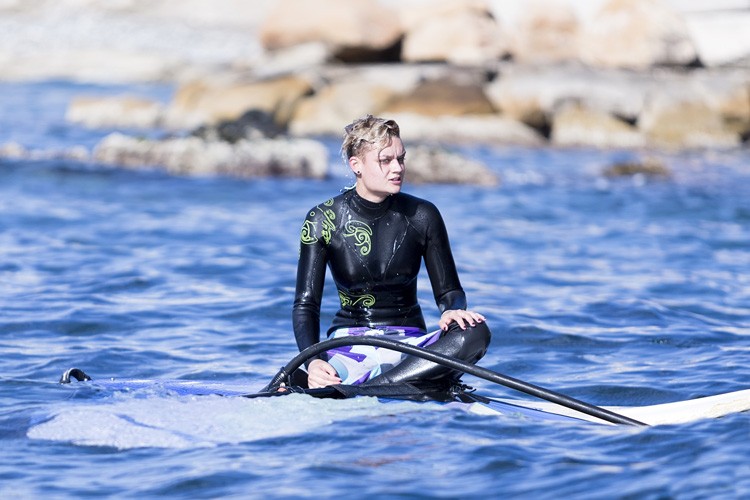
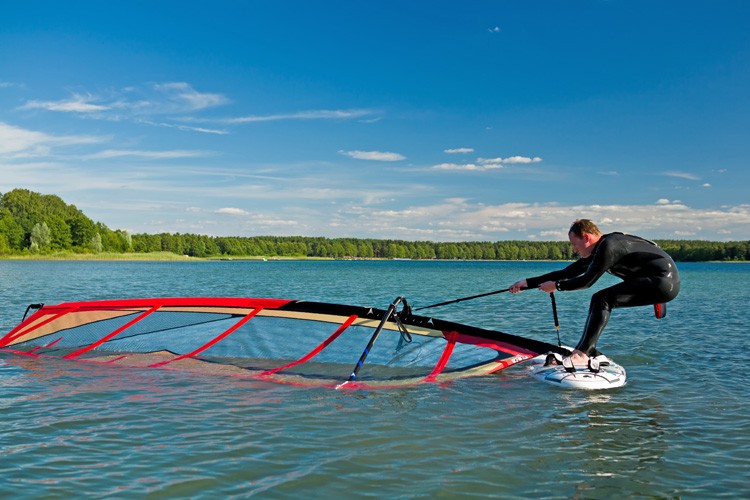
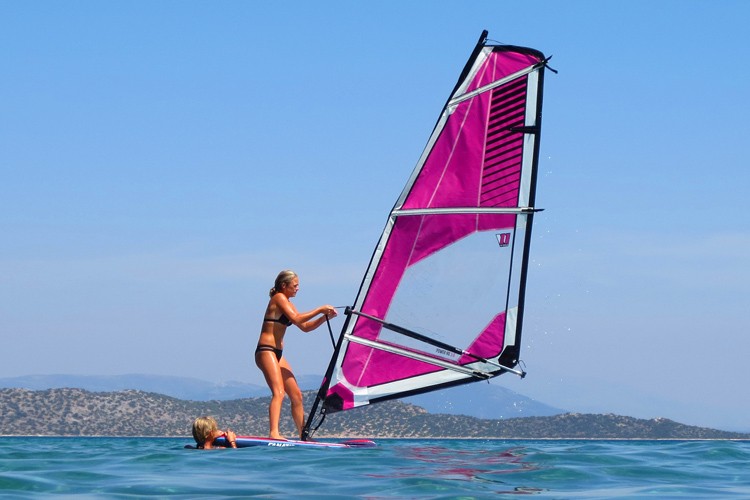
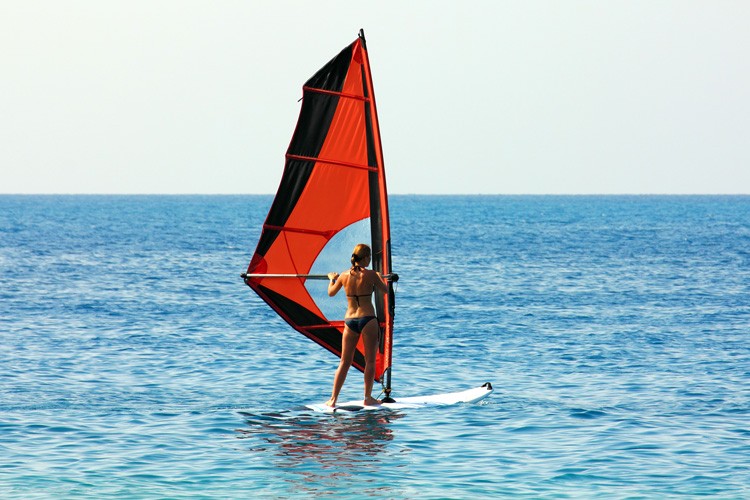
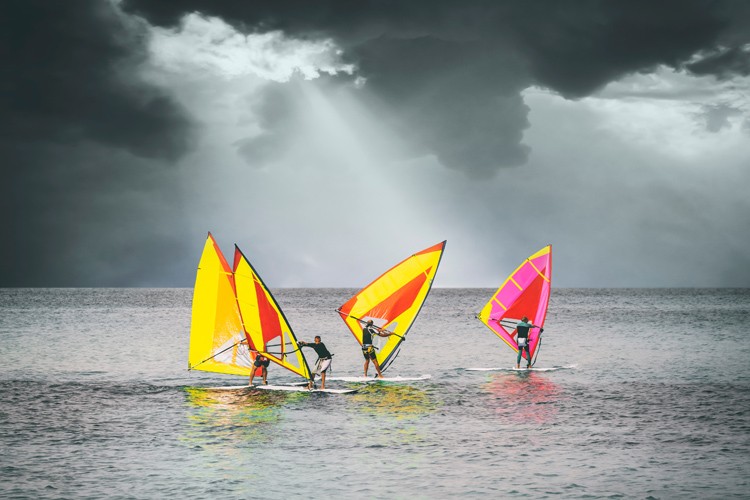
6. Advanced Techniques and Continued Learning
Once you’ve mastered the basics, you can explore advanced techniques:
- Planing: Sailing at high speeds with the board skimming over the water.
- Jibing: Turning downwind at high speed.
- Wave Riding: Using waves to perform tricks and maneuvers.
Continued learning is essential for improving your windsurfing skills. Consider these resources:
- Advanced Lessons: Taking lessons from experienced instructors.
- Windsurfing Clubs: Joining a local club for group practice and tips.
- Online Resources: Utilizing websites and forums for advice and tutorials.
- LEARNS.EDU.VN: Provides advanced windsurfing tips, guides, and tutorials.
7. Gear and Equipment Considerations
Choosing the right equipment is critical for learning windsurfing:
- Beginner Boards: Larger boards with more volume for stability.
- Beginner Sails: Smaller sails that are easier to handle.
- Wetsuit: Provides warmth and protection.
- Life Vest: Essential for safety.
- Harness: Helps reduce fatigue by transferring sail power to your body.
8. Safety Tips for Beginner Windsurfers
Safety should always be a priority:
- Check the Weather: Avoid windsurfing in strong winds or storms.
- Use a Leash: Attach your board to your ankle to prevent it from drifting away.
- Stay Within Your Limits: Don’t attempt advanced maneuvers until you’re ready.
- Inform Someone of Your Plans: Let someone know where you’re going and when you expect to return.
- Learn Self-Rescue Techniques: Know how to swim back to shore if you become separated from your board.
- Wear Appropriate Gear: Always wear a life vest and appropriate clothing for the conditions.
9. Overcoming Common Challenges
Beginner windsurfers often face specific challenges:
- Fatigue: Windsurfing can be physically demanding, especially at first.
- Frustration: Learning new skills can be frustrating.
- Fear: Overcoming the fear of falling or being overpowered by the wind.
Strategies for Overcoming Challenges:
- Take Breaks: Rest when you’re tired to avoid overexertion.
- Set Realistic Goals: Focus on small, achievable milestones.
- Stay Positive: Celebrate your progress and don’t get discouraged by setbacks.
- Seek Support: Connect with other windsurfers for encouragement and advice.
10. Leveraging Technology for Learning
Technology can enhance your windsurfing learning experience:
- Wind and Weather Apps: Use apps to monitor wind conditions and plan your sessions accordingly.
- GPS Tracking: Track your progress and analyze your performance.
- Video Tutorials: Watch instructional videos to improve your technique.
- Online Communities: Join online forums and groups to connect with other windsurfers.
11. How LEARNS.EDU.VN Can Help You Learn Faster
LEARNS.EDU.VN offers a comprehensive suite of resources designed to accelerate your windsurfing learning journey. Our platform provides:
- Detailed Tutorials: Step-by-step guides covering all aspects of windsurfing, from basic techniques to advanced maneuvers.
- Expert Advice: Tips and insights from experienced windsurfers and instructors.
- Interactive Courses: Engaging online courses that allow you to learn at your own pace.
- Community Forum: A supportive community where you can connect with other learners, ask questions, and share your experiences.
- Personalized Learning Plans: Customized plans tailored to your skill level and goals.
By leveraging these resources, you can optimize your learning process and achieve your windsurfing goals faster.
12. Real-Life Success Stories
Hearing from others who have successfully learned to windsurf can be inspiring. Here are a few examples:
- Sarah, 28: “I started with zero experience and was able to sail independently within a month thanks to consistent practice and online tutorials.”
- Mark, 45: “Taking lessons from a certified instructor made a huge difference. I progressed much faster than I would have on my own.”
- Emily, 19: “Joining a local windsurfing club was the best decision I made. The community support and tips were invaluable.”
13. Maintaining Motivation and Enjoyment
Staying motivated is key to long-term success. Here are some tips for keeping windsurfing fun:
- Set Achievable Goals: Focus on small, measurable goals to track your progress.
- Vary Your Routine: Try new locations and techniques to keep things interesting.
- Windsurf with Friends: Sharing the experience with others can make it more enjoyable.
- Celebrate Your Achievements: Acknowledge and reward yourself for reaching milestones.
- Remember Why You Started: Focus on the joy and excitement of windsurfing.
14. Common Mistakes to Avoid
Avoid these common mistakes to accelerate your learning process:
- Skipping the Basics: Master the fundamental skills before attempting advanced maneuvers.
- Using the Wrong Gear: Ensure you have equipment that is appropriate for your skill level.
- Ignoring Safety Precautions: Always prioritize safety and follow best practices.
- Overexerting Yourself: Take breaks and avoid pushing yourself too hard, especially in the beginning.
- Being Impatient: Learning windsurfing takes time and practice. Be patient and persistent.
15. The Role of Physical Conditioning
Physical fitness plays a significant role in windsurfing. Focus on these areas:
- Core Strength: Essential for maintaining balance and stability.
- Upper Body Strength: Needed for controlling the sail.
- Endurance: Required for longer sessions on the water.
Recommended Exercises:
- Planks: Strengthen your core.
- Push-ups: Build upper body strength.
- Swimming: Improve endurance and overall fitness.
- Yoga: Enhance flexibility and balance.
16. Understanding Wind and Weather Patterns
Understanding wind and weather is crucial for safe and enjoyable windsurfing.
- Wind Direction: Learn to identify wind direction and how it affects your sailing.
- Wind Speed: Be aware of wind speed and adjust your sail size accordingly.
- Weather Forecasts: Check weather forecasts before heading out and avoid windsurfing in adverse conditions.
17. Setting Realistic Expectations
It’s important to set realistic expectations when learning to windsurf.
- Progress Takes Time: Don’t expect to become an expert overnight.
- Setbacks Are Normal: Everyone experiences setbacks along the way.
- Celebrate Small Victories: Acknowledge and celebrate your progress, no matter how small.
- Enjoy the Process: Focus on the fun and excitement of learning a new skill.
18. Connecting with the Windsurfing Community
Joining a windsurfing community can provide valuable support and resources.
- Local Clubs: Join a local club for group practice and social events.
- Online Forums: Participate in online forums to ask questions and share your experiences.
- Social Media Groups: Connect with other windsurfers on social media.
- Events and Competitions: Attend windsurfing events and competitions to learn from others and test your skills.
19. Advanced Windsurfing Techniques
Once you’ve mastered the basics, you can explore advanced techniques such as:
- Planing: Sailing at high speeds with the board skimming over the water.
- Jibing: Turning downwind at high speed.
- Wave Riding: Using waves to perform tricks and maneuvers.
- Freestyle Windsurfing: Performing acrobatic tricks and maneuvers.
Learning these advanced techniques can take your windsurfing skills to the next level.
20. Windsurfing Destinations Around the World
Explore some of the best windsurfing destinations around the world:
- Maui, Hawaii: Known for its consistent winds and beautiful scenery.
- Cabarete, Dominican Republic: Popular for its warm water and reliable trade winds.
- Tarifa, Spain: A windsurfing paradise with strong winds and vibrant culture.
- Lake Garda, Italy: A stunning lake surrounded by mountains, offering excellent windsurfing conditions.
- Bonaire, Caribbean: Famous for its clear turquoise waters and consistent winds.
21. Understanding Windsurfing Terminology
Familiarize yourself with common windsurfing terms:
- Boom: The horizontal bar attached to the sail that the windsurfer holds.
- Mast: The vertical pole that supports the sail.
- Sail: The fabric that catches the wind and propels the board.
- Board: The platform that the windsurfer stands on.
- Fin: The blade attached to the bottom of the board that provides stability and control.
- Harness: A device worn by the windsurfer that attaches to the boom and helps transfer the power of the sail to the body.
- Uphaul: A rope used to pull the sail out of the water.
- Tack: A maneuver used to change direction while sailing into the wind.
- Jibe: A maneuver used to change direction while sailing downwind.
- Planing: The state of sailing at high speed with the board skimming over the water.
22. Choosing the Right Windsurfing School or Instructor
Selecting a reputable windsurfing school or instructor is crucial for a safe and effective learning experience.
- Certification: Ensure the instructor is certified by a recognized organization.
- Experience: Look for instructors with years of experience teaching windsurfing.
- Reputation: Check online reviews and ask for recommendations.
- Teaching Style: Choose an instructor whose teaching style matches your learning preferences.
- Safety Record: Inquire about the school’s safety record and protocols.
23. Windsurfing as a Lifelong Sport
Windsurfing is not just a sport; it’s a lifestyle. Many windsurfers enjoy the sport for decades, continuously improving their skills and exploring new destinations. By embracing the challenges and rewards of windsurfing, you can develop a lifelong passion that brings joy, fitness, and a deep connection with nature.
24. The Future of Windsurfing
Windsurfing continues to evolve with advancements in equipment and techniques. Innovations in board and sail design have made the sport more accessible and enjoyable for beginners. Emerging trends include:
- Foil Windsurfing: Using a hydrofoil to lift the board above the water, allowing for higher speeds and smoother rides.
- Wing Foiling: Combining windsurfing with hydrofoiling, using a handheld wing instead of a traditional sail.
- Electric Windsurfing: Using an electric motor to propel the board, allowing for windsurfing in light wind conditions.
These innovations are expanding the possibilities of windsurfing and attracting new enthusiasts to the sport.
25. Conclusion: Your Windsurfing Journey Awaits
Learning to windsurf is a rewarding journey that combines physical fitness, technical skill, and a deep appreciation for the natural elements. By following the steps outlined in this guide and dedicating time to practice, you can quickly acquire the skills needed to enjoy this exhilarating sport. Remember to stay safe, have fun, and never stop learning. With the resources available at LEARNS.EDU.VN, you’ll be well-equipped to embark on your windsurfing adventure.
Are you ready to start your windsurfing journey? Visit learns.edu.vn today to explore our comprehensive guides, expert advice, and interactive courses. With the right approach and resources, you can learn to windsurf faster and more effectively. Contact us at 123 Education Way, Learnville, CA 90210, United States or Whatsapp: +1 555-555-1212.
FAQ: Frequently Asked Questions About Learning to Windsurf
- Is windsurfing difficult to learn?
Windsurfing requires balance and coordination, but with proper instruction and practice, most people can learn the basics within a few days. - What is the best age to start windsurfing?
Children as young as 8 can start learning windsurfing, while adults of any age can also enjoy the sport. - Do I need to be a strong swimmer to windsurf?
Yes, being a competent swimmer is essential for safety. You should be able to swim back to shore in case you become separated from your board. - What kind of equipment do I need to start windsurfing?
You’ll need a windsurf board, sail, mast, boom, universal joint, wetsuit, life vest, and harness. - How much does it cost to learn windsurfing?
The cost varies depending on lessons, equipment rental, and location. Expect to spend a few hundred to several thousand dollars. - Can I learn windsurfing on my own?
While it’s possible to learn on your own, taking lessons from a certified instructor is highly recommended for safety and efficiency. - What are the best wind conditions for learning to windsurf?
Calm waters and moderate winds (8-12 knots) are ideal for beginners. - How long does it take to become proficient in windsurfing?
It takes a few weeks of consistent practice to become comfortable with independent sailing, and several months to years to master advanced techniques. - What are the common mistakes to avoid when learning to windsurf?
Skipping the basics, using the wrong gear, ignoring safety precautions, overexerting yourself, and being impatient. - What are the benefits of windsurfing?
Windsurfing improves physical fitness, balance, coordination, and provides a great connection with nature. It’s also a fun and exhilarating sport.